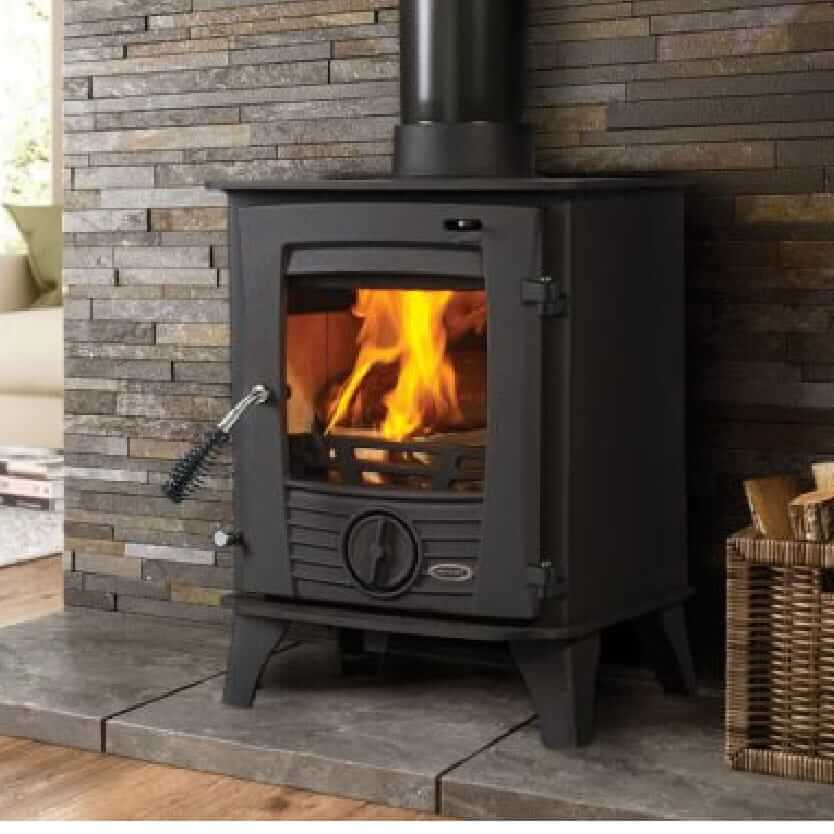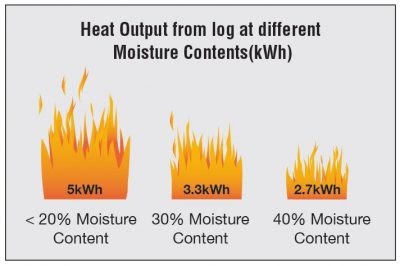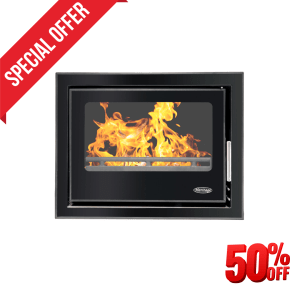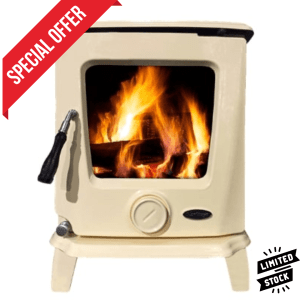
What Fuel Type should I feed my stove with?
Solid Fuel
While solid fuel may seem to be the obvious fuel type choice over wood or pellet, however it is not as efficient. Coal burns extremely hot, almost over 1000 Degrees. As a result of this, coal burns quicker, Thus being more costly.
Ireland is continually adding more legislation on the sale of solid fuel sources. In early 2021, Bord na Móna announced that it will end peat harvesting signalling a change in the way we eat our homes. As part of the Carbon Neutrality plan for 2050 Ireland has been making way for greener sources of energy. So it may be time to ditch solid fuel sources for your stove and check for some good wood logs/
Wood logs
These are an excellent source of fuel, but it must be noted that not all wood burns the same. Hardwood (Oak, Ash or beech) will give up to 1.5x more kWs per unit of heat than softwood. It’s important that the fire burns hot, heating the flue and keeping it clean. The less wood you need, the less time you will spend chopping and storing afterall.
Moisture content of wood is very important when buying your fuel. Although this may not be as easy to identify as it seems, it is of vital importance. Freshly cut logs or ‘green wood’ usually have water content of 60-80%. To reduce this we need to season the logs. This is done by storing them in a cool, dry well aired area after they have been split.

For the best fire with the smallest carbon footprint, the moisture content would ideally be below 20%. Whether you season your own wood, or buy it pre-seasoned, the moisture content is the most important factor to note. To be confident you are burning the best wood, you can use a moisture meter. This measures the water content of your wood logs. They are small, relatively cheap, and widely available at hardware stores.
Wood pellets & Briquettes
Wood pellets and briquettes are made from compressed sawdust that has been collected from the manufacturing process of other materials like tables, chairs and wood cabinets. These are compressed into pellets to increase the density of the sawdust. Pellets and Briquettes are a more sustainable option for your fuel source. Stoves require less fuel as the wood pellets produce a lot of heat.
Wood Briquettes and Pellets are relatively cheap compared to logs and solid fuels. Supplied in 15kg sacks, they retail between €7 – €8. This would heat the average irish house for more than 5 days. If the forests from which the wood comes are managed sustainably, the carbon balance of pellet combustion is zero. This is because the amount of carbon emitted during combustion is the same as the amount of carbon absorbed by the tree during its growth.
This is an important factor to note as Ireland moves towards its goal of net carbon neutrality.
Electric
When you think of a stove for your home, rarely do people think about an electric stove. That thought process will change with some of the new electric stove fires on the market. Electric Fires are almost maintenance free, other fuel type stoves require yearly cleaning and check ups. The installation process is much cleaner and cheaper, since there is no chimney they can be installed in any home or room. Giving the warmest of glow in an instant.
Having no chimney, electric stove fires produce no pollution. Neither do they lose any efficiency from loss of heat to the outdoors. Generally their 2 outputs are 1 Kw, or 2 Kw and electricity is roughly 20c/KWH so they are very cheap to run, and give instant heat opposed to wood or solid fuel.
What not to fuel your stove with
Waste Wood
It’s natural for people to want to save on their fuel costs. This leads many people to collecting wood that may otherwise be recycled like, cabinets, pallets and chairs. It is very harmful to burn treated timber, varnished wood or painted items. These pieces of waste wood tend to be chemically heavy. Air, inside and out can become poisonous after the burning of these materials.
Burning waste wood increases the build up of tar and deposits in your chimney which means more regular cleaning, or risking chimney fires. The money that will be saved in the short term will affect your stove in the long term.
Household Rubbish
Like waste wood, household rubbish can contain similar toxins and chemicals. These can have a negative effect on your air quality at home. Burning rubbish may seem convenient when you’re relaxing in front of the stove with snacks, but over time it effects both your health and your stove.
Some of our favourite stoves
-
 Hamco Heidi Pellet Stove€1,960.00
Hamco Heidi Pellet Stove€1,960.00 -
 Stanley Cara Insert Stove€2,949.00
Stanley Cara Insert Stove€2,949.00 -
Product on sale
 Clare 5kw Cassette Stove
Clare 5kw Cassette Stove€1,299.00€649.00 -
 Pollmore 5kW StoveFrom: €749.00
Pollmore 5kW StoveFrom: €749.00 -
Product on sale
 Ashford 7.5kW Multi Fuel Stove
Ashford 7.5kW Multi Fuel StoveFrom: €849.00From: €749.00

